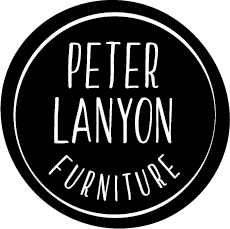Brown Oak
I am often asked about the timber used in my furniture, especially if it is brown oak. It can vary from lightly streaked - commonly known as Tiger Oak, to a deep chocolate brown. So what is it, and what causes it?
Contrary to what may people believe, brown oak is not a separate species, but is English Oak, or Quercus Robar, which has been infected with Beefsteak fungus (Fistulina Hepatica). The fungus attacks the tree, releasing an acid. The acid reacts with the tree, and stains it the beautiful brown colour you see. For this reason it is darker than “white” or normal oak. It is also slightly less dense.
Beefsteak fungus is blood red in colour (hence the name). The fungus breaks down, and eventually digests the cellulose in the timber. For this reason it is generally not advisable to use it in outdoor furniture . It is basically already partly decayed, so will not last anywhere near as long in an exterior environment as white oak or sweet chestnut. Indoors this will make no difference at all to its durability. Fistulina Hepatic also attacks sweet chestnut, but rarely to the same degree. Sweet chestnut will often display beautiful brown streaks, as can be seen in the photo below.
One other peculiarity of brown oak is that, contrary to received wisdom, it steam bends very well. Typically fungi-infected timber, such as spalted beech do not steam well. Brown oak however becomes very plastic, and puts up very little resistance to bending. Unlike ash and oak which tend to spring back slightly when the clamps are released, brown oak sometimes even springs inward, creating an even tighter curve than was intended.
In my own brown oak furniture I often combine it with other pale timbers to contrast with it. In the photos below of the Scritti Desk it has been contrasted with white ash. Sycamore also contrasts well with brown oak.
The timber in this desk top was milled in 2012 with local woodsmith Joe Scott. With 40-odd years of experience behind him, he described the timber we harvested from this tree as the prettiest he had ever seen. As of today, March, 2022 we still have a few prime boards left, for which we are seeking suitable projects. Contact me if you’d like to discuss a special project.




